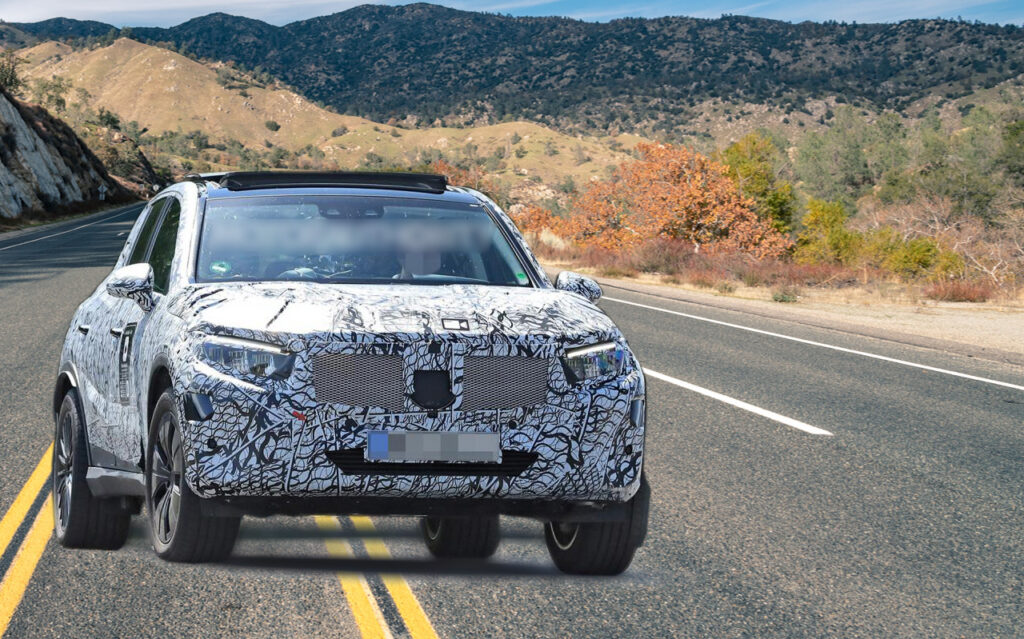
The rear-wheel steering was introduced in 1985. Nissan Skyline GTS was the first to use the technology. Thereafter other vehicle followed using different versions of this technology. Other vehicles that tried this technology are:
- Honda Prelude Si 4WS
- Mitsubishi 3000GT VR/GTO
- Renault Laguna
All-wheel steering remains a revolutionary technology even if some don’t hold this opinion.
Having established the above fact, let’s quickly go on to the focus of this news. Mercedes has taken this novel technology to a whole new level with the S-Class and EQS, following other new models with rear-wheel steering like AMG GT C and R as well as the GT 4-Door Coupe.
There is likelihood that the AMG GLC 63 will lose touch with its noisy V8 engine to an electric4-cylinder, which isan adaptation of the AMG 45 solidvehicle. Similar to the latest C-Class, all powertrains in the crossover’s neighborhood will be built on 4-cylinders, which will further send a signal to the inevitable economizing trend before electric vehicles takes overcompletely.
There are several advantages of the rear-wheel steering we can discuss a few of them briefly:
- Improved maneuvering ability, which should come handy when moving around town.
- Increased stability, which will be better appreciated when turning at high speed.
Logically you should bear in mind that the new Mercedes GLC will have the same configuration like the latest C-Class.
A basic understanding of how the rear steering operates would be beneficial to anyone desirable of laying a hand on a vehicle fitted with this technology. On a specific note, rear wheel driving is mostly found in bigger vehicles, such as trucks. It therefore would mean there are some benefits using the rear wheel steering systems. Racing cars, such as the Porsche 911 GT3 similarly use the rear wheel steering to facilitate in making certain turns, comparable to a four-wheel drive vehicle. Here we shall discuss some activities that happen behind the scene when turning in this and how some vehicles can use this to their benefit.
There are factors that influence the behavior of the wheel
Basically there are 2 major forces that influence the wheel when turning.
- The mechanic trail – the change between the steering area and the actual contact area – provides a self-aligning force.
- The inflated trail – which is related to the tire’s contact area with the road – creates additional torque in the opposite direction.
So, is there a problem with rear wheel drive (RWD)?
When doing a turn, the front wheel mechanism helps in providing balancing force for your vehicle. The self-correcting force is balanced with the extra torque making the car move forward. That is exactly why the wheels usually return to the right orientation once you let go of the steering wheel.
Now, with rear wheel drive, these balancing procedure explained above does not come into play. The ‘self-positioning’ powerin this case is now pushing the tire in the wrong direction, which impacts on the vehicle causing it to drastically oversteer, since the force multiplies even the smallest of movements.

